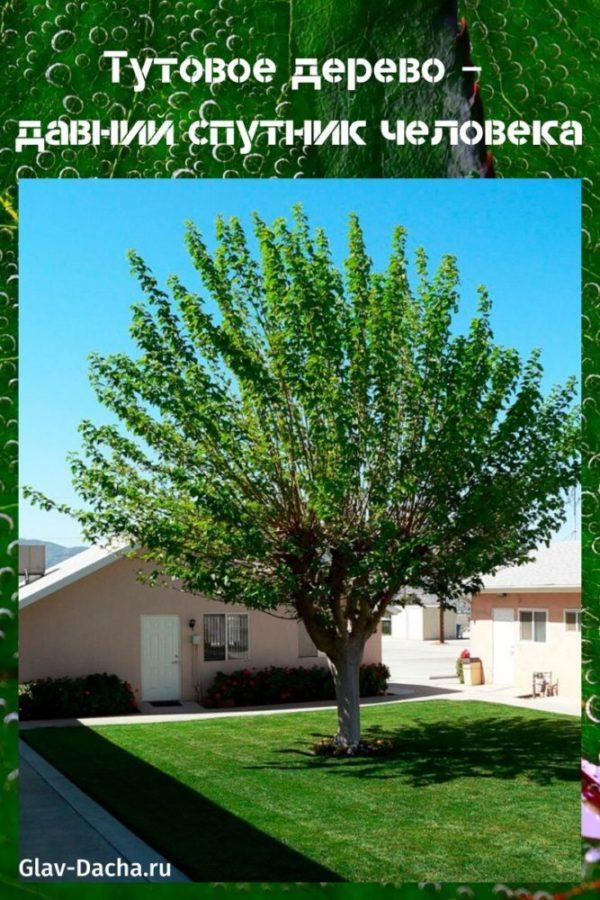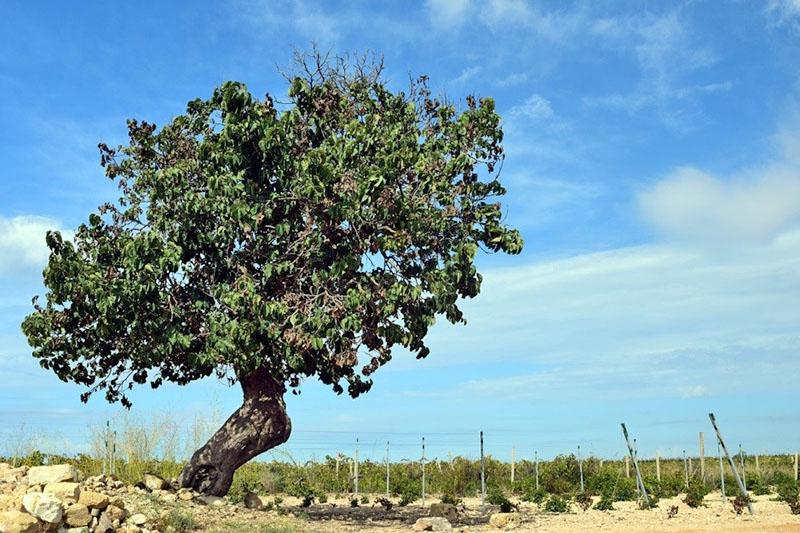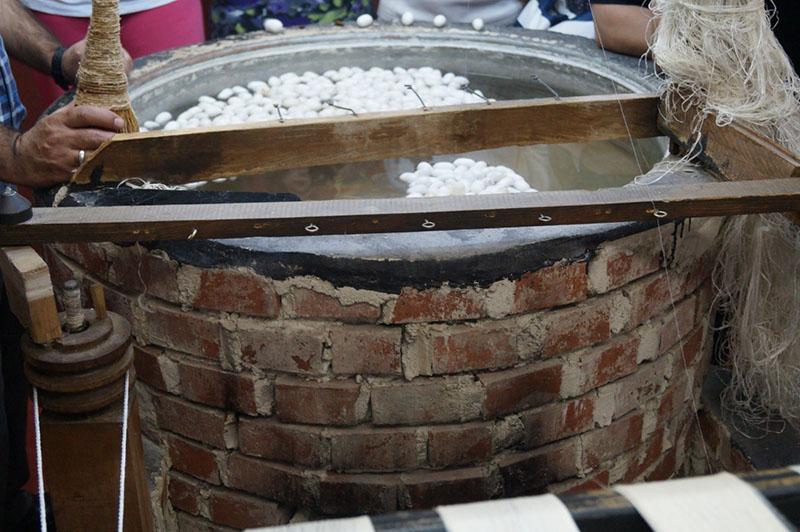The mulberry tree is a longtime human companion
 When, from behind the endless Great Wall of China, beautiful silk fabrics fell into the surrounding world, the Chinese answered questions about their origin in an oriental and mysterious way: "Gift of the gods." The mulberry tree existed in other regions, but was not used.
When, from behind the endless Great Wall of China, beautiful silk fabrics fell into the surrounding world, the Chinese answered questions about their origin in an oriental and mysterious way: "Gift of the gods." The mulberry tree existed in other regions, but was not used.
Where does the mulberry tree grow and the production of silk from it

Male flowers generate highly allergic pollen. Female flowers filter the air from dust and other allergens.
Mulberry refers to long-lived trees. In a familiar climate, they are able to live for 200-300 years. Wise Chinese use the mulberry trees growing in their country in a special way. They make the highest quality silk in the world from it.
 Everything turned out to be more prosaic: the silkworm butterfly lays eggs, which turn into caterpillars. They absorb the leaves of mulberry trees, grow, enter the pupation phase and create a cocoon of silk threads. A few days before the butterfly leaves, the cocoons are boiled in water, after which the threads unwind freely.
Everything turned out to be more prosaic: the silkworm butterfly lays eggs, which turn into caterpillars. They absorb the leaves of mulberry trees, grow, enter the pupation phase and create a cocoon of silk threads. A few days before the butterfly leaves, the cocoons are boiled in water, after which the threads unwind freely.
On the territory of the Celestial Empire, these insects were "domesticated", breeds were bred that give cocoons of exclusively white color. Even in the age of synthetics, the Chinese plant mulberry trees to obtain natural fabrics.
Silk production is 5 thousand years old. Only at the beginning of a new era did production go beyond the boundaries of the historical homeland. It remains in India, Turkey, Uzbekistan, Japan. For the particular use of the tree, it received a second name - mulberry.
Practical use

Mulberry trees are needed not only in sericulture:
- Delicious healthy berries. Mulberry fruits look like elongated raspberries or blackberries. They are black, white and red in color.
 Dark fruits - with sourness, light - sweeter.
Dark fruits - with sourness, light - sweeter.
- Vodka, wine, liqueurs are prepared from white berries.
- The leaves are brewed like tea and drunk to improve the functioning of the heart and blood vessels.
- Solid, beautiful wood. According to the color of the bark and inner layers, the mulberry is divided into white and black. Mulberry trees are used to make musical instruments, furniture, barrels, and household items. If a store offers goods made from this tree, they are imported. In Russia, since 211, cutting of mulberries has been prohibited.
- Money paper. Paper mulberry fibers are added to the raw materials for the production of Japanese national banknotes.
- Safe dyes. Berry pigments are suitable for dyeing confectionery and textiles.
- Landscaping. Weeping species of mulberry trees with inedible fruits and branches hanging to the ground are bred to decorate garden plots.

The chemical composition of the berries includes:
- vitamins B, C, PP, K;
- available compounds of iron, potassium, magnesium, calcium, copper, selenium, zinc;
- essential polyunsaturated fatty acids;
- the antioxidant resveratrol;
- flavonoids;
- essential oils.
Berries are used dried, fresh, as jam, candied fruits and filling for pies... In addition to simple pleasure, they are useful as a folk remedy for:
- problems with the stomach and intestines;
- colds and their complications;
- insomnia;
- the fight against extra pounds;
- the need to improve immunity.
Mulberries with a ball shaped crown also look beautiful, especially during the flowering period and autumn leaf fall.
Relatives of mulberry trees
The mulberry family includes several genera that are closely familiar to a wide range of people.
Breadfruit
 Its fresh fruits smell like freshly baked bread, and fried ones resemble potatoes. The birthplace of amazing plants is New Guinea, from where the aborigines, and then European travelers, took them to the islands of the Pacific Ocean and the Caribbean.
Its fresh fruits smell like freshly baked bread, and fried ones resemble potatoes. The birthplace of amazing plants is New Guinea, from where the aborigines, and then European travelers, took them to the islands of the Pacific Ocean and the Caribbean.
Ficuses
These include not only indoor plants, for example, Benjamin's ficus:
- Fig tree (figs or fig tree). This plant is mentioned in the New Testament and is considered sacred by Muslims. In Israel, tourists are shown a copy with a legend that Jesus and his disciples rested under it. Scientists scanned the tree and came to the conclusion that it is actually more than 2 thousand years old.

- Bengal ficus (banyan tree). The aerial roots of this tree, reaching the soil, turn into full-fledged trunks, on which a crown is formed. One plant can spread over several hectares.

- Ficus is rubbery. It is grown not only for natural rubber and latex. The roots of this tree are located not only underground, but also on its surface. In the rainiest place on the planet - the Indian state of Meghelaia - this property of the tree is used to build bridges. First, bamboo guides are equipped, then the roots of live ficuses are laid on them. In humid climates, vegetation quickly fills the space. In 10-15 years it is possible to "grow" a 30 m long bridge.
Anchar
 The poisonous anchar mentioned by Pushkin is also a relative of the mulberry tree. The sap of the species growing in Java is used by the natives to impregnate arrowheads. The subspecies from the Vitu Islands (near New Guinea) is not so dangerous. Its fruits are processed into carmine dye, and wood fibers are processed into burlap.
The poisonous anchar mentioned by Pushkin is also a relative of the mulberry tree. The sap of the species growing in Java is used by the natives to impregnate arrowheads. The subspecies from the Vitu Islands (near New Guinea) is not so dangerous. Its fruits are processed into carmine dye, and wood fibers are processed into burlap.
Mulberry Legends
 In different countries, the attitude towards this tree is different: from reverence for magic to outright rejection.
In different countries, the attitude towards this tree is different: from reverence for magic to outright rejection.
In Germany, the mulberry tree is considered unclean. According to ancient legends, Satan brushes his boots to shine with his roots.
The ancient Greeks believed that the white mulberry turned red after the suicide of the lovers Pyramus and Theisba. Their story inspired Shakespeare to create Romeo and Juliet.
The natives of the Pacific islands make amulets from the trunks of mulberry trees.
Mulberry tree in Russia
 Mulberry is an inhabitant of tropical and subtropical climates. In temperate latitudes on the territory of Russia, it grows in the North Caucasus, in the Rostov, Astrakhan, Volgograd regions, where frosty winters are rare. The subtropics of Crimea and the Black Sea coast of the Caucasus are a natural habitat.
Mulberry is an inhabitant of tropical and subtropical climates. In temperate latitudes on the territory of Russia, it grows in the North Caucasus, in the Rostov, Astrakhan, Volgograd regions, where frosty winters are rare. The subtropics of Crimea and the Black Sea coast of the Caucasus are a natural habitat.
Breeding for red South American species aims to develop varieties suitable for more northern regions. At home, these mulberries are not afraid of temperature fluctuations, cold, lack of moisture.
It is recommended to purchase seedlings in nurseries, since an ordinary summer resident cannot distinguish between female and male plants.
Given the large dimensions of the trees, no more than three to four specimens are placed on the site. After planting, the mulberry begins to actively bear fruit at 4-5 years of age. They choose for them the southern sections of the garden, or places protected by buildings from the northern winds. Trees lend themselves well to pruning. This allows the formation of a crown up to 4-5 m high in order to reduce shading of the area and to simplify the collection of berries.
Trees usually bloom in May and early June. The berries ripen in August. Fruits require immediate processing, as they quickly deteriorate. For harvesting, they wear clothes that you do not mind getting dirty. Women should take care of plastic gloves. It is more difficult to get rid of silk stains than from blueberry. The juice of dark berries is practically not washed off and is very difficult to wash off hands.
Plants of the Shelley-150 variety, created in Ukraine, grow leaves 50 cm long, and berries - 5.5 cm.The tallest specimens of black mulberry reach a height of 25 m.Weeping species do not exceed 3 m.In Cyprus, an annual festival dedicated to mulberry tree and silkworm.